Pemanfaatan Web PhET Simulations untuk Meningkatkan Pemahaman dan Hasil Belajar Matematika Materi Pecahan Siswa Kelas IV MI Nurul Islam Dasan Baru
Published:
2025-04-25Issue:
Vol. 1 No. 1 (2025): AprilKeywords:
PhET Simulations, fractions, understanding, learning outcomesAbstract
Learning mathematics, particularly fractions, is often challenging for elementary school students due to its abstract and difficult-to-understand nature. This study aims to improve the understanding and learning outcomes of fourth-grade students at MI Nurul Islam Dasan Baru in fractions through the use of interactive learning media PhET Simulations. This study uses the Kurt Lewin Classroom Action Research (CAR) approach, which consists of planning, action, observation, and reflection stages. The subjects were all fourth-grade students in the 2024/2025 academic year. Data collection techniques included observation, testing, and documentation. Data were analyzed descriptively by calculating the average score and percentage of learning completion. The results showed that the use of PhET Simulations can significantly improve students' understanding of fraction concepts, encourage active student involvement in the learning process, and improve overall learning outcomes. Thus, the integration of interactive media such as PhET in mathematics learning can be an effective solution to overcome student learning difficulties and create a more meaningful learning experience.
References
Fachrurazi, Sujinah, and Faizah. 2018. “Model Pembelajaran Pecahan Dengan Pendekatan Luas Area Materi Perbandingan Pecahan Di Kelas IV SD Negeri 3 Percontohan Matangglumpandua.” Jupendas: Jurnal Pendidikan Dasar 5 (2): 35–43.
Fitriyati, Ika, and Andi Prastowo. 2022. “Pembelajaran Daring Menggunakan Phet Simulations Untuk Meningkatkan Keaktifan Dan Hasil Belajar Siswa Madrasah Ibtidaiyah.” Al-Madrasah: Jurnal Pendidikan Madrasah Ibtidaiyah 6 (4): 1041. https://doi.org/10.35931/am.v6i4.1120.
Kurniawati, Ira, Imam Sujadi, Riki Andriatna, Arum Nur Wulandari, and Yuli Bangun Nursanti. 2025. “Didactic Situations in Fraction Learning with PhET Colorado for Seventh Grade Students.” Jurnal Pendidikan Dan Pengajaran 58 (1): 90–103. https://doi.org/10.23887/jpp.v58i1.86279.
Marinda, Leny. 2020. “Teori Perkembangan Kognitif Jean Piaget Dan Problematikanya Pada Anak Usia Sekolah Dasar.” An-Nisa’ : Jurnal Kajian Perempuan Dan Keislaman 13 (1): 116–52. https://doi.org/10.35719/annisa.v13i1.26.
Norlaila, Norlaila, Hidayah Ansori, and Juhairiah Juhairiah. 2024. “Pengaruh Penggunaan Media Pembelajaran Interaktif Phet Simulation Terhadap Hasil Belajar Siswa Pada Materi Pecahan.” Jurmadikta 4 (2): 54–66. https://doi.org/10.20527/jurmadikta.v4i2.2770.
Rahmah, Ajeng Anisatu. 2023. “Efektivitas Media PhET Simulation Tentang Pemahaman Materi Pecahan Senilai Di Kelas IV Sekolah Dasar (Penelitian Kuasi Eksperimen Di Kelas IV SDN Leuwibodas).”
Rendra Setiawan, Anggra, and Ni Wayan Arini. 2023. “Penerapan Model Student Team Achievement Division Berbantuan Media Kartu Pecahan Sederhana Untuk Meningkatkan Prestasi Belajar Matematika Siswa Kelas II SD.” Journal of Innovation and Learning 2: 14–18.
Sulistiawati, Anjar. 2022. “Penerapan Simulasi PhET pada Pembelajaran Matematika di Kelas III SDN Trayu.” Penambahan Natrium Benzoat Dan Kalium Sorbat (Antiinversi) Dan Kecepatan Pengadukan Sebagai Upaya Penghambatan Reaksi Inversi Pada Nira Tebu 07.
Wiwit Listiyoningrum, Fenny Roshayanti, Ligar Widayati, Muhammad Saifuddin Zuhri. 2024. “Implementasi Penggunaan Media Interaktif Phet Colorado Dalam Pembelajaran Pecahan Pada Siswa Sekolah Dasar.” Jurnal Riset HOTS Pendidikan Matematika 4: 115–23.
Author Biography
Alfia Rahmawati, Universitas Mataram
License
Copyright (c) 2025 Alfia Rahmawati

This work is licensed under a Creative Commons Attribution-ShareAlike 4.0 International License.
Authors who publish with Jurnal Profesi Guru Indonesia (JPGI) agree to the following terms:
- Authors retain copyright and grant the journal right of first publication with the work simultaneously licensed under a Creative Commons Attribution License 4.0 International License (CC-BY-SA License). This license allows authors to use all articles, data sets, graphics, and appendices in data mining applications, search engines, web sites, blogs, and other platforms by providing an appropriate reference. The journal allows the author(s) to hold the copyright without restrictions and will retain publishing rights without restrictions.
- Authors are able to enter into separate, additional contractual arrangements for the non-exclusive distribution of the journal's published version of the work (e.g., post it to an institutional repository or publish it in a book), with an acknowledgement of its initial publication in Jurnal Profesi Guru Indonesia (JPGI).
- Authors are permitted and encouraged to post their work online (e.g., in institutional repositories or on their website) prior to and during the submission process, as it can lead to productive exchanges, as well as earlier and greater citation of published work (See The Effect of Open Access).




